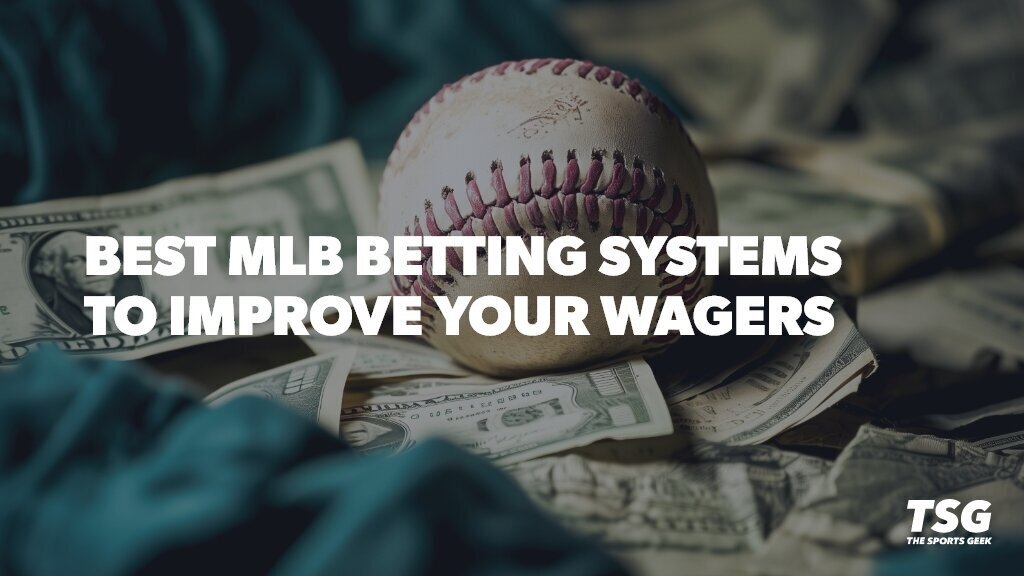
There are many MLB baseball betting systems, but only a few of them actually work. The good news is that compiling a well-executed system for MLB can result in huge profits!
MLB betting systems are the hallmark of a successful strategy on the baseball field. Due to a huge 162-game season and data set, implementing a system can yield the best outcome for bettors rather than sports with a limited schedule.
Below, check out our best baseball betting system, tips, and recommendations before placing your MLB wagers.
System 1: First Five Innings Betting
One of the chief complaints from bettors about baseball is that your bet can be going well, and then the bullpen ruins everything thanks to one bad inning. The majority of people place their wagers based on the starting pitchers.
Researching starting pitchers is a great starting point for any MLB betting system. If you fall in love with a starter and are not so confident in the bullpen, then consider taking the first five innings bet, or F5 wager. This strategy eliminates the stress involved with having to deal with shaky relievers.
In addition to examining the starters, some clubs have more success than others early in games. Data is available on the win/loss rate, runs per F5, ERA, and more of MLB teams through the first five innings. Target clubs that get out to quick starts and fade teams that are slow out of the gate.
System 2: Underdog Value Betting
Baseball is a long season running from late March to late October. Each team plays 162 games, so this means underdogs are going to win plenty of games. In 2024, 29 MLB teams won at least 61 games.
In short, even the worst teams won plenty of games over the course of a lengthy campaign. What does this mean? Simply put, there are opportunities to cash in big on underdogs every day.
Conversely, the best team in Major League Baseball, the Los Angeles Dodgers, lost 64 games. The Dodgers and elite ball clubs regularly have huge odds to win, often eclipsing well over -200 on the moneyline. Regularly backing these odds is an awful strategy that will lead to losing money.
James Wood extends the Nationals lead over the Dodgers! 💥
— FOX Sports: MLB (@MLBONFOX) April 8, 2025
(via @Nationals)pic.twitter.com/m0Y8zgPsdi
Instead, research each game individually and do not blindly bet on massive favorites. Rather, embrace the value of underdogs and treat baseball betting as a marathon, not a sprint. Value on underdogs will vary from matchup to matchup, but we like circling teams that are historically strong against certain pitchers.
Elite pitchers are often priced high, but even these skilled hurlers run into problems against inferior foes. Check out their pitching data against an underdog’s lineup, and if they routinely struggle, this is a big green flag!
System 3: Betting Totals and Props on Umpire Assignments
Believe it or not, the home plate umpire has a considerable impact on the final score of games. Until robo-umps take over MLB, there is a lot of discretion for the guy calling balls and strikes behind the plate.
Some umpires have a wide strike zone and give more leeway to pitchers. Meanwhile, you can find umpires who like to squeeze pitchers and don’t give much room for error.
If it isn’t across the middle of the plate, the pitcher likely isn’t getting the benefit of the doubt. These stats are reflected in umpires’ strikeout rates. Fortunately, most umpires have a large sample size of data over multiple years for bettors to dissect.
In other words, MLB umpire stats are an important tool to examine before placing your wagers. For umpires who have a lower K rate and higher OBP/walk percentages, you want to look at betting on the over, and perhaps player prop bets that favor offense.
Naturally, the opposite is true for umpires who like to ring batters up and strike them out more often. Bet the under! Other factors in the matchup must be considered before locking in your wager, but this is one of the best MLB betting systems that offers a large compilation of data.
System 4: Betting Based on the Direction of the Wind
Bettors often neglect looking at the weather forecast before locking in their wagers. One of the worst sins you could do is ignore the forecast for the wind. It has a detrimental impact on home runs, or lack thereof, if the wind is blowing in.
Strong gusts pointing toward the outfield can give the ball a free ride over the fence. This equals more runs on the scoreboard than would otherwise be recorded. The longest home run ever recorded by Statcast is 505 feet by Nomar Mazara, which coincided with a broken wind protection screen due to a storm.
According to baseball physicist Dr. Alan Nathan, just 5 mph worth of wind behind a ball can add 19 feet of distance traveled! In the case of Mazara’s home run, his swing would have typically resulted in a ball traveling an average of 431 yards without the assistance of the windy conditions.
You should be especially careful for the following ballparks:
Ballparks Impacted by Wind Most Often
1. Chicago Cubs (Wrigley Field)
2. Boston Red Sox (Fenway Park)
3. New York Mets (Citi Field)
4. Kansas City Royals (Kauffman Stadium)
5. Colorado Rockies (Coors Field)
Wrigley Field in Chicago is impacted by wind more than any other ballpark in MLB. It can be the difference between a low-scoring pitcher’s duel and a high-scoring, 20-run baseball game.
The Diamondbacks scored 10 RUNS in the 8th inning and LOST to the Cubs 😳
— SportsCenter (@SportsCenter) April 18, 2025
The combined 16 runs in the 8th was the highest-scoring inning in the history of Wrigley Field, which opened in 1914! pic.twitter.com/NpKM7N6qMp
If the wind is blowing in towards the infield from the outside, then, of course, this will help keep balls in the field of play. Weather forecasts can change from hour to hour, so ensure you double-check before locking in your total wagers.
It’s one of the simplest baseball betting systems anyone could follow, but many don’t care to take the time to check out which way the wind is blowing!
System 5: Betting on HR Props and Overs in Warmer Months
In addition to the wind, the time of the year can have an impact on the trajectory of fly balls. Warm, humid air in hot months can give the ball an extra boost in the outfield.
With this in mind, it isn’t a surprise that the all-time MLB record holders for home runs in a month are from June to August. During this time frame, different players hit 20 (Sammy Sosa – June), 16 (Albert Belle – July), 16 (Mark McGwire – July), 18 (Rudy York – August), and 18 (Giancarlo Stanton – August) home runs.
Interestingly, there isn’t another month when at least 18 homers were recorded in MLB history by one player. Barry Bonds hit 17 home runs in May, while Belle and Babe Ruth each connected for 17 in September, but that’s all.
Additionally, June 2019 stands as the record for most home runs hit in a month. There was a total of 1,142 homers hit to break the MLB record. In other words, three out of four months of the highest long ball marks were from June to August:
-
- June 2019 (1,142 HR)
- May 2019 (1,135 HR)
- August 2017 (1,119 HR)
- June 2017 (1,101 HR)
While we certainly recommend betting on home run props and overs on the total during other months, the hot and humid months are when you should emphasize them for your MLB betting strategy.
Are you Ready to Test Your MLB Betting System?
Now that you have your best baseball betting system, it’s time to put it into action to win real cash! There are a variety of MLB betting sites to place your bets at, but we’ve discovered one online bookie that shines above the rest for baseball.
Bovada has everything an MLB bettor could need to get the best experience this baseball season. We appreciate the large selection of markets available, including prop bets, futures, live betting, and the best pre-match odds online at Bovada!
New customers can collect one of the best welcome bonuses in the business, too. Deposit at Bovada with promo code BV1000 to claim a 100% match bonus of up to $1,000.

- Wide-ranging sportsbook and live betting platform
- Top-notch poker room with numerous tournaments






You must be logged in to comment. Don't have an account? Sign up today.